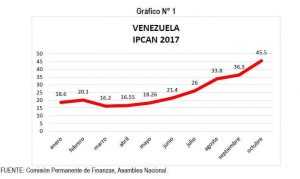WORLD DIABETES DAY
World Diabetes Day is a day of awareness campaign about diabetes and takes place every year on November 14th.
This disease doesnt present pains and can go unnoticed, but its important to know about its symptoms:
Go to the bathroom frequently.
Weight loss, although it is believed that it should be the opposite because it is a disease caused by poor diet and obesity, when suffering from it usually happens otherwise.
Increased thirst.
You feel tired all day.
Wounds tend to heal more slowly, which can lead to infections.
The vision becomes blurred.
Swelling of feet and hands.
Tingling and itching of the extremities.
How can we prevent it?
Type 1 diabetes: cant be prevented. Even doctors cant determine who will get this disease and who will not.
On the other hand type 2 diabetes: can be prevented by taking into account adequate food: avoid junk foods and soft drinks with too much sugar; An exercise routine every day for 30 minutes.
Type 1 diabetes
Definition
Type 1 diabetes is a lifelong (chronic) disease in which there is a high level of sugar (glucose) in the blood.
Alternative Names
Insulin-dependent diabetes; Juvenile onset diabetes; Diabetes – type 1
Causes
Type 1 diabetes can occur at any age. It is most often diagnosed in children, adolescents, or young adults.
Insulin is a hormone produced in the pancreas by special cells, called beta cells. The pancreas is below and behind the stomach. Insulin is needed to move blood sugar (glucose) into cells. Inside the cells, glucose is stored and later used for energy. With type 1 diabetes, beta cells produce little or no insulin.
Without enough insulin, glucose builds up in the bloodstream instead of going into the cells. This buildup of glucose in the blood is called hyperglycemia. The body is unable to use the glucose for energy. This leads to the symptoms of type 1 diabetes.
The exact cause of type 1 diabetes is unknown. Most likely it is an autoinmune disorder. This is a condition that occurs when the immune system mistakenly attacks and destroys healthy body tissue. With type 1 diabetes, an infection or another trigger causes the body to mistakenly attack the cells in the pancreas that make insulin. The tendency to develop autoimmune diseases, including type 1 diabetes, can be passed down through families.N.
Symptoms
HIGH BLOOD SUGAR
The following symptoms may be the first signs of type 1 diabetes. Or, they may occur when blood sugar is high.
- Being very thirsty
- Feeling hungry
- Having blurry eyesight
- Feeling numbness or tingling in your feet
- Losing weight without trying
- Urinating more often (including urinating at night or bedwetting in children who were dry overnight before)
For other people, these serious warning symptoms may be the first signs of type 1 diabetes. Or, they may happen when blood sugar is very high:
- Deep, rapid breathing
- Dry skin and mouth
- Flushed face
- Fruity breath odor
- Nausea and vomiting; inability to keep down fluids
- Stomach pain
LOW BLOOD SUGAR
Low blood sugar (hypoglycemia) can develop quickly in people with diabetes who are taking insulin. Symptoms usually appear when a persons blood sugar level falls below 70 milligrams per deciliter (mg/dL) or 3.9 mmol/L. Watch for:
- Headache
- Hunger
- Nervousness
- Rapid heartbeat (palpitations)
- Shaking
- Sweating
- Weakness
After many years, diabetes can lead to serious health problems, and as a result, many other symptoms.
Type 2 diabetes
Definition
Type 2 diabetes is a lifelong (chronic) disease in which there is a high level of sugar (glucose) in the blood. Type 2 diabetes is the most common form of diabetes.
Alternative Names
Noninsulin-dependent diabetes; Diabetes – type II; Adult-onset diabetes; Diabetic – type 2 diabetes; Oral hypoglycemic – type 2 diabetes
Causes
Insulin is a hormone produced in the pancreas by special cells, called beta cells. The pancreas is below and behind the stomach. Insulin is needed to move blood sugar (glucose) into cells. Inside the cells, glucose is stored and later used for energy.
When you have type 2 diabetes, your fat, liver, and muscle cells do not respond correctly to insulin. This is called insulin resistance. As a result, blood sugar does not get into these cells to be stored for energy.
When sugar cannot enter cells, a high level of sugar builds up in the blood. This is called hyperglycemia. The body is unable to use the glucose for energy. This leads to the symptoms of type 2 diabetes.
Type 2 diabetes usually develops slowly over time. Most people with the disease are overweight or obese when they are diagnosed. Increased fat makes it harder for your body to use insulin the correct way.
Type 2 diabetes can also develop in people who are thin. This is more common in older adults.
Family history and genes play a role in type 2 diabetes. Low activity level, poor diet, and excess body weight around the waist increase your chance of getting the disease.
Symptoms
People with type 2 diabetes often have no symptoms at first. They may not have symptoms for many years.
Early symptoms of diabetes caused by a high blood sugar level may include:
- Bladder, kidney, skin, or other infections that are more frequent or heal slowly
- Fatigue
- Hunger
- Increased thirst
After many years, diabetes can lead to serious health problems, and as a result, many other symptoms.







